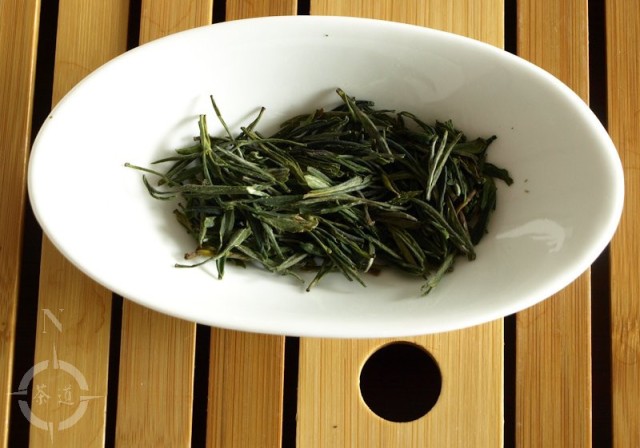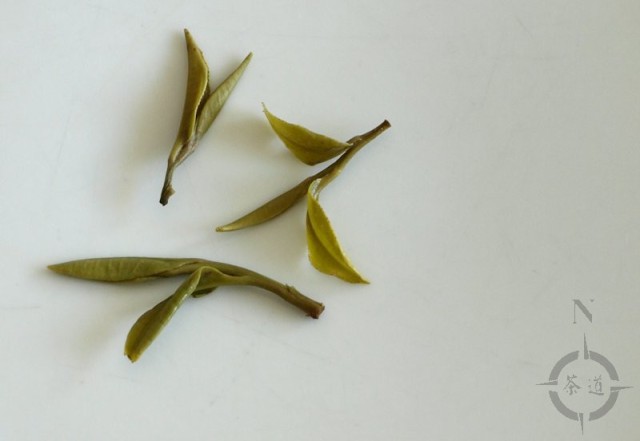
Just after our summer holiday I felt I was in a bit of a rut tea-wise.
Being on the road for the better part of a month meant being away from my favourite teas and teaware. and after going on a gong-fu rampage through my tea stash during those first tea-soaked days back at home, there quickly came a sudden feeling that the brakes had been slammed on, and that the tea-appreciation tank was worrying close to empty.
Luckily the solution was remarkably simple – jump online and get buying!
Once I knew that my purchases were safely en-route to my tea cupboard, my mood improved no end!
Once that packet arrived, just over a day and a bit after I clicked on the “buy” button, this was the first tea I pounced upon, like a famished lion on a baby gazelle.
Huo Shan Huang Ya is a yellow tea (huang cha) from An Hui province. Huang Ya, or “yellow sprout“, refers back to the fact that there is a high percentage of buds in this tea.
This tea comes from a small independent tea garden at Da Hua Ping, which lies in Huo Shan county in the Huo Shan mountain region.
The particular cultivar is Huoshan Morning , one traditionally used for this tea.
Due to the intricate nature of its manufacture, genuine yellow tea has to be hand-made by highly skilled and experienced personnel, and as you would therefore expect this is reflected in the price.
I bought a 50 gram packet from Swedish tea merchant House of Tea, and paid 169 Swedish Crowns, which equals £14.87, $19.94, and €17.72 respectively.
It was grown at an altitude of 800m, and was a first plucking, harvested in the early spring of 2015.
The aroma the dried leaf gave off as I transferred it from the postal packaging to a caddy was intense to say the least. The best way I can describe it is as a Longjing on steroids turned up to 11.

It was like a biscuit shop, a fruit shop, a florists, and a candy store all fighting to occupy the same physical space.
I dropped about 7g into a 150ml capacity gaiwan, and once I had heated water up to 85°C I was good to go.
I started off with a 15 second infusion, increasing the duration by 5 seconds for each subsequent steeping.
A large part of yellow tea’s character is down to the men huan “sealing yellow” technique, which sees the leaf steamed then covered with a cloth after the sha qing (“killing-green”) heating procedure that stops oxidation.
The men huan step reduces grassiness as well as astringency, and this was very noticeable in the tea liquor. Yellow tea at times may look like green tea, but the taste of the tea itself has a roundness and a mildness that sets it apart from its green cousins.
The number of buds in the tea gave a very noticeable sweetness, not as much as a Silver Needle for example, but still very forthright.
This tea is often described as “waxy“, and I can see where people are coming from there. It had the feel in the mouth of the stock from a good quality Chinese vegetable soup, with a kind of pleasant light, clean, oily character to it.
By the 6th infusion the biscuity baked flavours were on the wane, and allowed a delicate floral note to the fore that was presumably masked in the earlier steepings.
The 8th and 9th infusions were 1 and 2 minutes respectively. It felt as though the leaves had no more to give, so I called a halt to the session there.
A good tea, this, one really worth getting to know.


This one is going on my list, fo’ sho’.
LikeLiked by 1 person
Pingback: Friday Round Up: September 4th - September 10th | Subscription Cafe
Pingback: Wuyi Shan Shui Hsien | Diary of a Northern Teaist
Pingback: Guang Xi Huang Ya | Diary of a Northern Teaist
Pingback: Friday Round Up: September 4th – September 10th – Tea for Me Plese